
One of the biggest mistakes any dog owner can make when getting a puppy is to get 2 or more at a time. Yes they are cute, and fun, and exciting, but they are also much more difficult to train. The puppies will form their own little pack and not learn from the humans the way an individual puppy will. If you want to, rather, if you can afford to own more than one dog, you should get one at a time and train it for at least one full year EVERY DAY. 2 years or more is even better to wait.
If you do this you will come to find that the other well trained dog can even "help" you train the new puppy. 
Another word of caution - when you already own an adult dog(s) and you acquire a new puppy make sure NO ONE gives the puppy more attention than the other dog(s). This will give the puppy the sence that it is the pack leader and will create dominance that can lead to behavioral problems in your pack.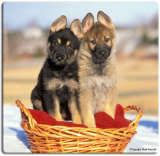
And, as always, DO NOT get a puppy or dog on a whim! Make sure you have the time and money to add a puppy or dog to your family BEFORE you get one!
Tuesday, March 31, 2009
Puppy Power!
Posted by The Leader of the Pack at 11:38 AM 0 comments
Monday, March 9, 2009
Switching The Diet
Just a quick note on this one. I'm surprised how many people don't know this one, so I thought I'd share it with everyone.
I you decide to switch your dog's diet, even if it's just a change in dog food brands, do it gradually mixing the old food with the new food for a week or two before making the complete switch. Changing food too rapidly for dogs can cause them to have an upset stomach including (but not limited to) vomitting and diarrhea. Even if you are simply making the change from puppy chow to adult dog chow, mix it for 7-14 days. (This applies to cats too)
And, as always, be sure to check with your vet to make sure it's okay to change your pet's diet.
Posted by The Leader of the Pack at 11:11 PM 0 comments
Friday, February 20, 2009
What Not To Feed.
Sure you love your dog, but sharing your food with him because he keeps staring at you with that "sad puppy dog" look is NOT a way to tell him you love him.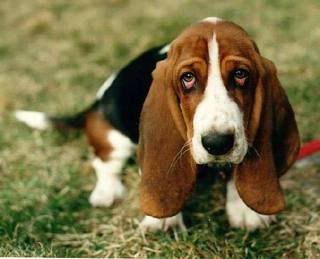
In fact it's one of the WORST things you can do to your dog. First of all, most human food is very bad for dogs - some are even lethal. Second of all it teaches your dog to beg from people and that's just bad manners for any dog to have. If you want to feed your dog a special treat have it be away from where the humans eat, and some fruits, veggies, lean meats, and starches are okay. Check with your vet or with the ASPCA Animal Poison Control Center website to see if it is a pet-safe treat. Their web address is posted in a link on the right side of my blog site. Here is a list of foods that are ABSOLUTELY NOT good for your pets.
- Raw Eggs: could contain Salmonella, and raw egg whites have an enzyme that prevents uptake of biotin - a B vitamin.
- Milk: can cause diarrhea in puppies and adults.
- Bones: Raw bones can damage teeth and cause gastrointestinal blockage or perforation. If a dog overeats cooked bones it can cause severe constipation.
- Raw Meat: could be contaminated with Salmonella or E. coli
- Grapes and Raisins: can cause kidney failure if too many are eaten. It varies from dog to dog how many grapes/raisins would be toxic.
- Avocados: can cause digestive tract irritation, with vomiting and diarrhea.
- Chocolate: contains methylxanthines and theobromine, caffeine-like compounds that can cause diarrhea, vomiting, tremors, abnormal heartbeat, seizures and death. The darker the chocolate, the more toxic compounds.
- Onions, Fresh Garlic, and related foods: can cause gastrointestinal irritations and anemia if eaten in sufficient amounts. Toxicity depends on food and individual dog.
- High-fat Foods: If overfed, can lead to pancreatitis (inflammation of the pancreas).
You should consult with your vet before changing your dog's normal diet.

Posted by The Leader of the Pack at 11:18 AM 0 comments
Sunday, February 15, 2009
Pets = Messes
I have found the BEST solution to cleaning up stains! (And no, this company is in NO WAY paying me for this "advertisement" - but they should! Ha ha) It's a product called SIMPLE SOLUTION. I have only been able to find it sold at PetSmart thus far. But this stuff is the BEST! I use it on EVERYTHING. It cleans stains and kills odor like you wouldn't believe. I tell all of my clients about it, so I thought I'd post it for everyone to read. And I don't just use it for pet messes, in fact, I rarely have pet messes but being a mom I CONSTANTLY have kid messes. One of my friends even used it to get some stains out of their mattress that they were selling. It works on carpet, couches, car interior, hard surfaces etc. It comes in a spray bottle or you can buy the gallon size - I have both and just refill my spray bottle as needed.
Okay, that's all the free advertising I'm giving out for this post. 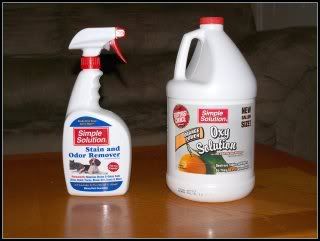
Posted by The Leader of the Pack at 9:35 PM 0 comments
Saturday, January 10, 2009
Playin' at the Park
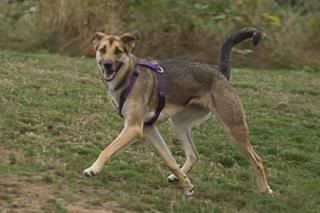
Dog Parks are great. They are a good way to help dogs become socialized with other dogs and other people. But there are a few things you should keep in mind before taking your pooch to the park.
1. Make sure you exercise your dog BEFORE going to the park. A 30 - 45 minute walk before you go to the park is ideal. This helps drain extra energy, especially in high energy breeds and makes your dog more manageable during play time. Dog parks are a great way to have your dog get MORE exercise, but going to the park with too much energy could spell trouble if your dog has a tendency to be dominant towards other dogs.
2. Make sure your dog stays in your sight at all times. One problem I've found at our local dog park is that too many people treat it like doggy day care. Just because they are off the leash does not mean that you're off the hook. Pay attention to your dog and watch for any body language he/she displays that might signal play time is turning to a fight.(Tail straight up, or mounting of other dogs are signs of dominance that can lead to aggression) 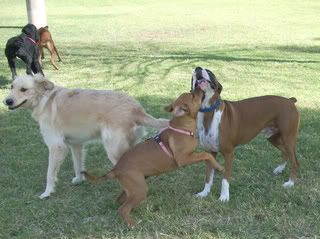
3. Don't bring small children to the dog park. Kids LOVE dogs, but it's not always mutual. Young children who are not old enough to understand AND obey the simple rule of DO NOT TOUCH OTHER PEOPLE'S DOGS should not be taken to the dog park. They are at extreme risk of getting bitten or even knocked over by running dogs. My own children do not accompany me to the dog park unless it's completely vacant.
4. Protect your pack members at all times. Part of keeping constant watch on your dogs is also to protect them from other dogs who might hurt them. Our park has two separate sides to it, one for bigger dogs, and one for smaller. Don't let your dog play with dogs that are drastically different in size from him/her. If other dogs attack or start fights, take your dog and leave. You can't control what kind of owners the other dogs have, but you can control keeping your dog away from dangerous situations. If a fight does break out, stay calm while removing your animal, if you're tense it will only add to the negative energy and add to the problem. Screaming at a dog is a wasted endeavor. 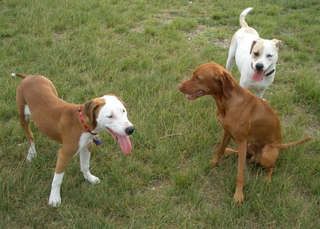
Hopefully your visits to the Dog Park will be a fun and rewarding time for both you and your pack.
Posted by The Leader of the Pack at 4:59 PM 0 comments
Thursday, December 18, 2008
Pumpkin Puff Pet Treats
With all the baking of Christmas goodies, don't forget to make a holiday treat for the 4 legged members of your pack! Here is a simple recipe I got from the back of the Christmas card that my vet sent to me.
Pumpkin Puff Pet Treats
1 1/2 C. Canned Pumpkin(use the plain pumpkin, not the stuff with other spices in it)
1/2 tsp. Vanilla Extract
3 1/2 C. Oats
1/4 C. Applesauce
Directions:
First, preheat oven to 350 degrees. Mix all ingredients together thoroughly. Drop tablespoons of the mixture onto an ungreased bakink sheet and press flat with a fork. Bake for approximately 15 minutes (if using a baking stone bake for 18-20 minutes) then cool on a rack before serving. Store in an airtight container for maximum freshness.
**If your pet has a pre-existing medical condition, please consult your vet before introducing new food.
MERRY CHRISTMAS!
Posted by The Leader of the Pack at 3:59 PM 0 comments
Tuesday, November 11, 2008
Herding Dogs
I LOVE Herding Dogs! Obviously my Favorite is the Pembroke Welsh Corgi, but all herding dogs are spectacular!
The Beautiful Border Collie has been scientifically proven to be the smartest breed of dog in existence today. 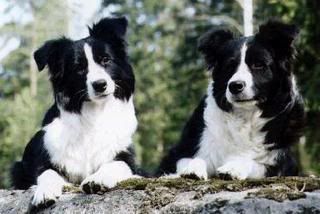
The Corgi was originally used to herd cattle because they are so low to the ground, and able to turn on a dime, that they were well out of harm's way if the cattle would kick at the dog.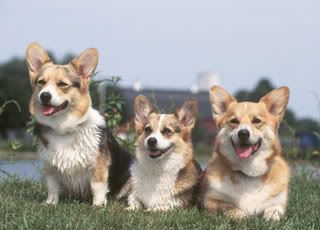
The Australian Shepherds (which are actually an American breed) have agility that is simply amazing, as well as an intelligence that makes them easy to train.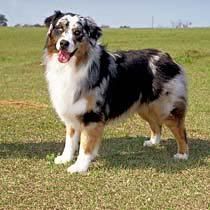
The German Shepherd is one of the most versatile herding dogs. They have been used for many more jobs than just that of their origin in the pastoral group.
One of the many facets that all herding dog breeds have in common is a keen intelligence. They have been bred to be the smartest of all dog groups. The down side of having such an extremely intelligent animal is that they need mental stimulation much more than some other breeds. Just physical exercise, such as walking, is not enough for these breeds. They need a "job" to do, lest they become under stimulated mentally and develop bad behaviors. I have trained Banon, my Corgi, in both agility and fly ball. While she has never competed in either event, the regular training of a more mentally challenging exercise helps keep her well balanced.
Border Collies are not suited to being pets. They need constant stimulation and firm training, otherwise they may become snappy if bored.
Corgis are less likely to snap than Border Collies, but still are not an ideal pet for young children. Yes, that may seem hypocritical, but keep in mind, I am a Behaviorist and Trainer. Also, my dogs and my children are never together unsupervised.
German Shepherds are an extremely loyal breed, but if kept as a pet, they too need firm training and regular exercise.
Australian Shepherds have a more even disposition and are well adapted to family life. However they are by no means exempt from the firm training necessity.
Owning a herding dog, whether pure bred or mixed, is a great joy. They are fun, energetic, loyal, and protective. The trick is to make certain, before getting a herding dog, that you, as the pack leader, have plenty of time to train and exercise the dog.
There are many herding breeds to choose from. I only listed four of the more commonly owned for the sake of time. Here is a short list of other breeds to consider and research if you are interested in getting a herding dog.
Australian Cattle Dog
Bearded Collie
Belgian Shepherd
Briard
Rough Collie
Smooth Collie
Kelpie
Old English Sheepdog (often confused with the Bearded Collie)
Great Pyrenees
Samoyed
Shetland Sheepdog
Posted by The Leader of the Pack at 10:10 PM 0 comments



